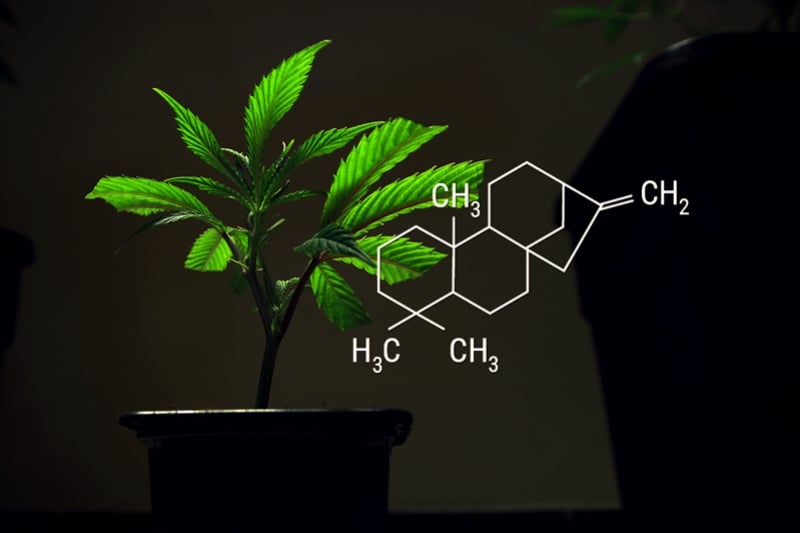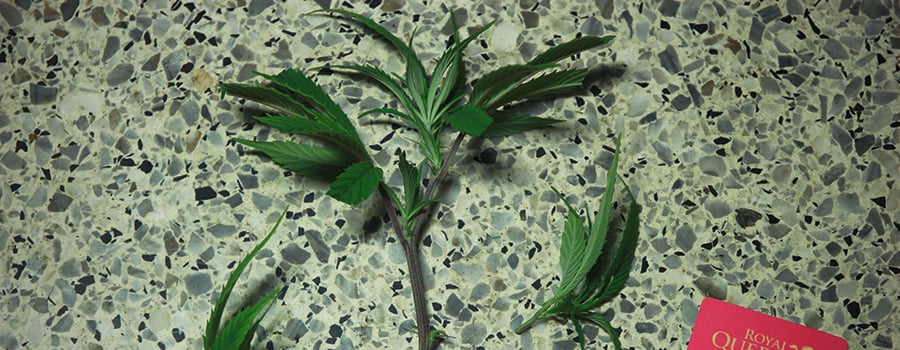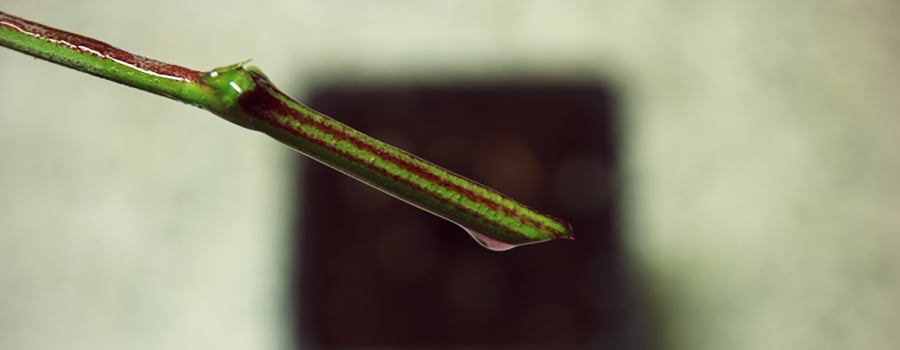.

Cannabis Clones And Rooting Hormones
Clones are the best way a home grower can keep hold of dank genetics and continue to crop a specific cannabis strain long-term. Similarly, if you plan on growing large numbers of plants, cannabis cuttings are the smart option. Rooting hormones play a key role in cloning. Find out why here.
Contents:
Cloning is consistently inconsistent for all kinds of growers, from novices to cultivators with decades of grow room experience. Taking cuttings is hit-or-miss for a variety of reasons. Although, to be clear from the outset, the number one cause of death for cannabis clones is the cannabis cultivator. Grower error is responsible for most clone casualties.However, professionally produced cannabis clones from trusted breeders arrive already rooted and hardened off, dramatically reducing failure rates.
To successfully root cannabis cuttings, the grower must be willing to experiment in order to discover the custom formula that works for them. There is no one way to take cuttings and root them. But no matter which method you use, the biological fuel for root development are rooting hormones.
Sure, you can cut stems at a 45 degree angle with scissors, or cut finely with a razor blade, or cut precisely with a scalpel. Without rooting hormone, home-taken cuttings will struggle to root. This is why many growers prefer to buy pre-rooted clones from breeders, which arrive already treated and ready for transplant.

WHAT’S THE BEST WAY TO ROOT CLONES?
Ok, so you’ve decided on a clean cutting tool, invested in a propagator, and perhaps you have some cutting practice, albeit with mixed results. You have three types of rooting product to choose from; rooting hormone is available in gel, liquid, and powder form. It’s best to stick with the cannabis-specific brands. Some square gardening products work and some don’t. Why take the risk?
Using homemade rooting products or those from the garden center is amateurish and not recommended. High-quality cannabis rooting hormones are inexpensive and will cost you less than €20. If you want a high rate of success and a process that you can repeat, you must match the right tools with the right techniques. And practice, practice, practice until you’ve got it down perfect. The best way to root clones is the way that works for you, again and again.
WHAT ARE ROOTING HORMONES?
Generally, there are five agreed plant hormones: auxins, abscisic acid, cytokinins, ethylene, and gibberellins. When it comes to rooting cannabis cuttings, it’s all about the auxins:cytokinins ratio. In ordinary decent stoner terms, auxins are root juice. The two most important natural auxins are, brace yourself for the science, indole-3-acetic acid or IAA, and IBA or indole-3-butyric acid.
HOW TO USE ROOTING HORMONE PRODUCTS
Typically, rooting hormone products are based on either IBA or a synthetic auxin like NAA (1-naphthaleneacetic acid). There are lots of really effective cannabis rooting products available, both from the grow store and online. Let’s discuss the three most commonly-used forms of rooting hormone by home growers.
CLONING POWDER
Cloning powder is favored among commercial growers and those planning on large crops. As a powder, it has by far the longest shelf-life of any rooting product; plus, you can root a lot of clones using little powder. After you make your cut, you need to cover the tip in powder. Most growers fill a bottle cap or small cup and tap off the excess. Then, place your cutting in your medium of choice.
CLONING LIQUID
Cloning liquid is pretty versatile. Some growers like to dilute a few ml in 6.0pH water and immerse rooting mediums like coco coir, Jiffy pellets, or rockwool cubes in the solution to promote root zone development. More common is for growers to dunk a fresh cutting in a lid full of cloning liquid for 5 seconds, and then insert in the rooting medium.
CLONING GEL
Cloning gel is probably the most popular form of rooting hormone used by home growers these days. Again, to use gel, it’s more or less the same as the other two methods. You dunk your cutting into a small cup full of gel, only the gel is a gooey consistency and covers more of the cutting base and lower stem. Gel is easy to use and very effective. Dunk and pop your clone in a rooting cube.

HOW TO PROMOTE SEEDLING ROOT DEVELOPMENT
Some home growers will mix cloning powder with seedling potting mix to make it more auxin-rich. This is most effective with seedlings in small pots or containers. As the plants transition to vegetative growth proper, you need to transplant to a medium with fewer auxins or stem development will be stunted.
Other growers will use a light solution to assist rooting by adding a few ml of cloning liquid with watering, directly after transplant. This is in order to promote root development without building up too many auxins in the medium that will inhibit stem growth later.
Nevertheless, it´s always better to follow the steps suggested by the manufacturer of agents you use for cloning. If you want to experiment and use agents differently than suggested, it's better to only do it on a few plants and see if it makes sense and does not do more harm than good.
ENVIRONMENTAL CONDITIONS
The ideal habitat for cannabis clones is a propagator under an 18-6 light schedule. CFL or LED are the best solutions for cloning. You mainly need a blue light spectrum, but a decent portion of the red spectrum helps too. A PPFD light intensity of 60–250μmol/m²/s is optimal to reach. Don’t be tempted to run lights 24 hours straight to speed things up. Clones do most of their actual rooting during the dark cycle. So stick with a conventional 18/6 cycle. It is also possible to place the propagator in the same room as your mother plants and use light from the main light fixtures. However, this is an emergency solution as the temperature here is usually higher than you need for fast rooting.
Maintaining optimal environmental conditions during propagation is critical to clone survival. Try to keep humidity at 70–90% and the temperature up to 24°C. However, the temperature of the growing medium should not exceed 22 °C. You can occasionally mist plants with pure water if the RH gets a bit too low. Successfully rooting clones can become routine if you can control the climate and master your method.
NATURAL HOMEMADE ROOTING COMPOUNDS
There are a number of commercial rooting hormones available that promote the healthy striking of clones.
With the demand for high quality organic weed increasing all the time. It makes sense to begin the life of your plants with an organic homemade rooting compound. Here are 6 natural and homemade methods for helping cuttings develop their first shoots.
1. CINNAMON
Yes, cinnamon. Cinnamon isn’t so much a rooting compound as a natural antifungal agent that prevents pathogens from harming developing roots.
In a well prepared quality medium, cuttings will eventually develop roots without the need for rooting compounds. It can take a little longer and cinnamon will protect the young plant while it strikes roots.
- Shake some cinnamon into a small container.
- Dip the cutting into the cinnamon.
- Plant as normal.

2. HONEY
Honey is an old school way to aid with striking cuttings. It has a number of beneficial enzymes and vitamins and is a natural antibacterial and antifungal. As with cinnamon, honey might not be considered a rooting compound as much as a protectant for emerging roots. It goes without saying that natural honey needs to be used. Be careful, many of the shelf brands contain substantial amounts of sugar syrup. Be sure the honey is pure.
- Decant an amount of honey.
- Dip the clone in the honey and let any excess drip away.
- Plant as normal.

3. WILLOW WATER
Certainly the most traditional rooting compound, used by gardeners since time immemorial. Willow water has naturally occurring indolebutyric acid, which is a growth stimulant. This is why a willow branch laid on the ground will sprout roots and grow.
- First source some willow and cut a small bunch of young branches, enough to fill 2 cups. Don’t collect fallen branches as the important compound is gone. The size and thickness of a pencil is ideal. You can also use the bark of the willow tree itself, however you will need 3 cups as the indolebutyric acid is weaker in bark.
- Cut the branches or bark into small pieces and place in a container that can hold at least 5 litres of fluid.
- Using a large saucepan boil 3.7 litres of water.
- Pour the boiling water over the willow bits and leave to steep for at least 12hrs, preferably 24hrs.
- Your rooting hormone is now ready. Strain into clean glass bottles making sure no bits get into the mix. Tag and date bottles and store in the fridge. It will keep for up to 2 months.
- When ready to make clones, decant some of the tonic into a container large enough to hold your cuttings. Let them rest for a few hours while the indolebutyric acid works it rooting magic.
- Plant as normal.

4. ALOE VERA
Aloe Vera is a common succulent with many uses. A favorite for sunburns and getting rid of dark rings under the eyes. Aloe is also a handy natural rooting aid for clones, as it contains salicylic acid, which is a growth stimulant. Aloe can also be watered into mature plants to encourage healthy overall growth.
- Break off an Aloe frond and squeeze out the sticky juice into a clean container of pure water. Give it a stir until the goo is well dissolved. Container size depends on how many cuttings are being made.
- Make your cuttings and put them into the aloe and water mix. Leave them to soak for 24hrs. You will notice they increase their turgidity.
- 24hrs later break off another Aloe frond and push the cut stalk into the wound. Agitate it a bit to make sure the juice gets onto the stalk. Agitation has the added benefit of mildly scoring the outer cambium where root shoots will be encouraged to develop.
- Plant as normal.

5. APPLE CIDER VINEGAR
Apple cider vinegar is a useful rooting tonic for clones. It must be diluted, otherwise it can be too acidic and harm the clones whilst dropping the medium pH.
- Dilute the apple cider vinegar with fresh. 1 teaspoon of ACV to 6 cups of water and stir well. Any stronger than this is too acidic.
- Dip the cutting in the diluted mix.
- Plant as normal.

6. ASPIRIN
Uncoated aspirin tablets can also be used to make a rooting agent. They contain salicylic acid, which is why aspirin in vase water helps cut flowers last longer. Follow the method for the willow tonic to make a rooting agent. Aspirin may not be totally organic, but is a cheap homemade solution to expensive rooting compounds.
- Purchase uncoated aspirin tablets. There’s no need for any additives that may harm young plants.
- Dissolve a tablet in a clean glass of water. Give it a quick stir to ensure there are no solids left over.
- Place the cuttings in the solution and leave to sit for a few hours.
- Plant as normal.









































